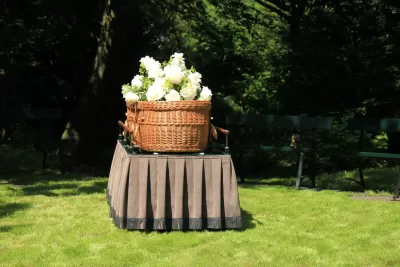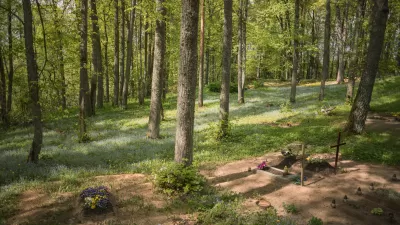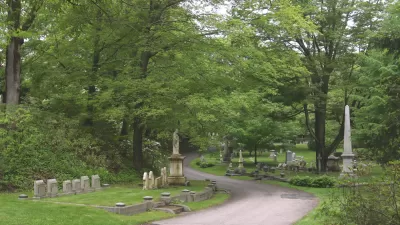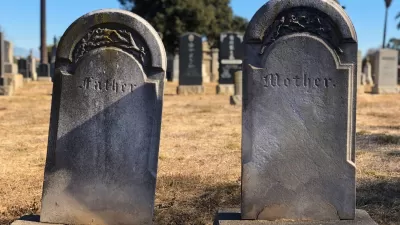The practice, which is gaining popularity as an environmentally friendly alternative to embalming and cremation, is in line with traditional Jewish and Muslim funeral practices.

The state of Minnesota passed a law barring new cemeteries from offering ‘green’ burial for two years. Green or natural burial eliminates the use of toxic embalming chemicals, concrete vaults, and steel-lined caskets in favor of burial using natural materials such as wood and linen. As Walker Orenstein explains in MinnPost, proponents say the practice is better for the environment, prevents chemicals from leaching into the ground, and leads to faster, more natural decomposition. The ban will not apply to cemeteries already using the practice.
The moratorium was passed as a response to unfounded concerns that burying bodies at a shallower depth than the traditional six feet could pollute water or lead to bodies dug up by wildlife. However, thousands of cemeteries around the country and the world—including traditional Jewish and Muslim graveyards, not to mention every American cemetery prior to the Civil War—perform natural burials with no problems.
The law, which was aimed at a proposed new green cemetery, also comes into conflict with religious freedom. “Could Minnesota’s green burial law potentially block new Islamic and Jewish cemeteries for two years? And did Minnesota lawmakers consider that when passing the moratorium?” Kyle Anderson, funeral director and cemetery manager for the Minnesota Islamic Cemetery Association, says “there will be a need eventually for more cemeteries serving Muslims in the area, since Garden of Eden, which he estimates handles more than 90% of burials for Muslims in the Twin Cities, will be full in as soon as a decade.”

Alabama: Trump Terminates Settlements for Black Communities Harmed By Raw Sewage
Trump deemed the landmark civil rights agreement “illegal DEI and environmental justice policy.”

Study: Maui’s Plan to Convert Vacation Rentals to Long-Term Housing Could Cause Nearly $1 Billion Economic Loss
The plan would reduce visitor accommodation by 25% resulting in 1,900 jobs lost.

Why Should We Subsidize Public Transportation?
Many public transit agencies face financial stress due to rising costs, declining fare revenue, and declining subsidies. Transit advocates must provide a strong business case for increasing public transit funding.

Paris Bike Boom Leads to Steep Drop in Air Pollution
The French city’s air quality has improved dramatically in the past 20 years, coinciding with a growth in cycling.

Why Housing Costs More to Build in California Than in Texas
Hard costs like labor and materials combined with ‘soft’ costs such as permitting make building in the San Francisco Bay Area almost three times as costly as in Texas cities.

San Diego County Sees a Rise in Urban Coyotes
San Diego County experiences a rise in urban coyotes, as sightings become prevalent throughout its urban neighbourhoods and surrounding areas.
Urban Design for Planners 1: Software Tools
This six-course series explores essential urban design concepts using open source software and equips planners with the tools they need to participate fully in the urban design process.
Planning for Universal Design
Learn the tools for implementing Universal Design in planning regulations.
Smith Gee Studio
Alamo Area Metropolitan Planning Organization
City of Santa Clarita
Institute for Housing and Urban Development Studies (IHS)
City of Grandview
Harvard GSD Executive Education
Toledo-Lucas County Plan Commissions
Salt Lake City
NYU Wagner Graduate School of Public Service





























